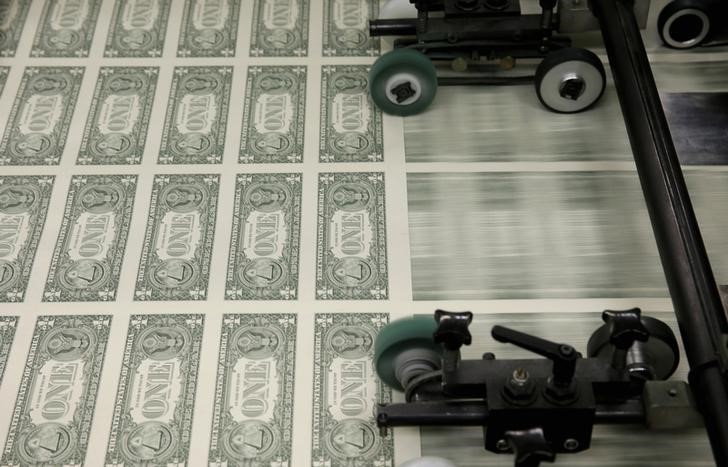Investing.com - The dollar trimmed gains against a basket of other major currencies on Wednesday, after data showed that manufacturing conditions in the New York area contracted unexpectedly in April and that U.S. industrial production fell more than expected last month.
In a report, the Federal Reserve Bank of New York said that its general business conditions index decreased to -1.2 this month from a reading of 6.9 in March. Analysts had expected the index to inch up to 7.0 in April.
Data also showed that U.S. industrial production declined 0.6% last month, worse than expectations for a drop of 0.3%. Industrial production rose by 0.1% in February.
Meanwhile, manufacturing production inched up 0.1% in March, in line with forecasts and following a drop of 0.2% in February.
The U.S. dollar index, which measures the greenback’s strength against a trade-weighted basket of six major currencies, was up 0.20% to 99.21, after hitting 99.57 earlier in the session.
EUR/USD was down 0.22% to 1.0633, off session lows of 1.0572.
The euro pared losses after European Central Bank President Mario Draghi played down speculation that recent signs of a recovery in the euro zone economy could see the bank scale back its buying program.
He said there is "clear evidence" that the policy measures are effective and added that borrowing conditions for firms and households have "improved notably".
The ECB is monitoring inflation closely the ECB chief said, and it still expects inflation to rise back towards its target in 2016 and 2017.
The ECB maintained its benchmark interest rate at a record-low 0.05%, in line with market expectations. The central bank also held its marginal lending at 0.30% and left its deposit facility rate unchanged at minus 0.20%.
ECB president Mario Draghi was expected to discuss the effects of the bank's €1.1 trillion quantitative easing program on the region's economy at the press conference.
The pound was steady, with GBP/USD at 1.4784.
Elsewhere, the dollar edged lower against the yen, with USD/JPY easing 0.08% to 119.30 and little changed against the Swiss franc, USD/CHF at 0.9721.
The Australian dollar held steady, with AUD/USD at 0.7628, while the New Zealand dollar turned higher, with NZD/USD up 0.41% to 0.7553.
The export-related currencies came under pressure earlier, after data showed that while China’s economy grew 7.0% in the first quarter, matching forecasts, it was still the slowest rate of growth in six years.
China is Australia's biggest export partner and New Zealand's second biggest export partner.
Meanwhile, USD/CAD slipped 0.17% to trade at 1.2465 after the Bank of Canada left its overnight cash rate unchanged at 0.75%, in line with expectations.
The statement came shortly after data showed that Canadian manufacturing sales dropped 1.7% in February, compared to expectations for a 0.2% fall. January's figure was revised to a 3.0% decline from a previously estimated 1.7% slide.
